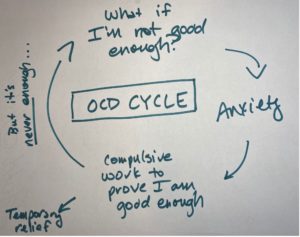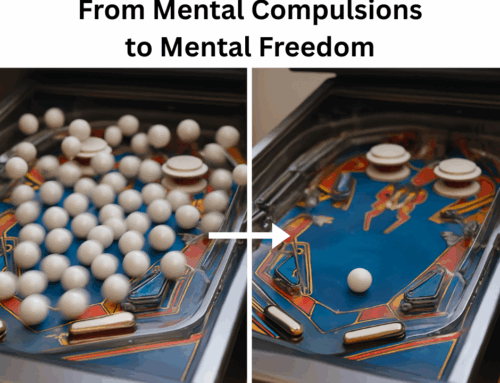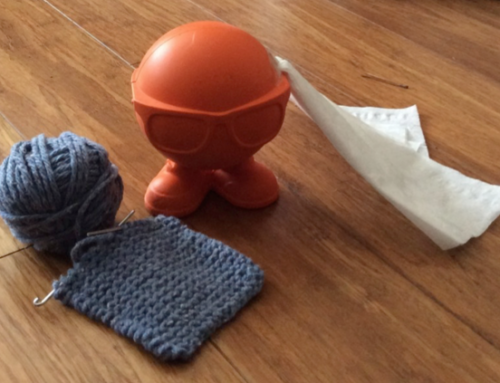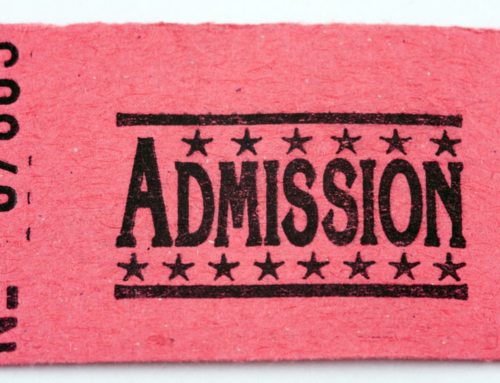2021 is the year I turn 50, and I’ve spent a fair bit of time recently thinking about the half century I’ve lived. I’ve noticed that I often linger on memories of the 1990s, when I was in my twenties, and I’ve come to the conclusion that that’s because my 25-year-old self has something to teach me about breaking out of the OCD cycle.
There were times during that decade of my life when I was participating in things that made feel exhilarated. But there were also many other times when, regardless of what I was doing, I was downright terrified—of doing something wrong, of getting a disease, of harming others, of people finding out with certainty that I was a horrible person—because I had undiagnosed, untreated OCD.
Driven by fear
As a result, fear shaped much of my approach to life, as I describe in Is Fred in the Refrigerator? Taming OCD and Reclaiming My Life:
I’d been an intense Type A overachiever since high school…I virtually vibrated with a mixture of energy, drive, and anxiety. I knew I was only as good as my last success, which had a shelf life. Like fruit left ripening on the vine, success had a short window in which it could be enjoyed before it—and my self-worth—started to decay. I was intense because I needed to be, because the survival of my very soul depended upon how well I did. Success was a form of absolution: tacit confirmation from others that I was okay.
I know that 25-year-old Shala was doing the best she could at the time, and I feel a mixture of compassion, regret, and motivation when I think about her. Compassion because it’s overwhelming to live with the amount of fear she carried on a day-to-day basis. Regret because she missed enjoying a lot of life as a result. Motivation because two decades later I can learn from her and not repeat the OCD-driven mistakes of my past.
Recognizing the process of OCD
My 25-year-old self was stuck in a classic obsessive-compulsive cycle:

There were variations on this theme, such as
- “What if I can’t get enough sales prospects to agree to meet with me/proposals written/jobs sold and I get fired?” or
- “What if I said the wrong thing and offended that customer/promised something I can’t deliver/divulged information I’m not supposed to share/etc?”
But these were merely examples of OCD content—all the stuff it was using to scare me into compulsive compliance. Further, some of these wouldn’t stand out as OCD and might fall under what I call “stealth OCD,” which is a mixture of OCD and generalized anxiety (see Q2 of this blog for more about stealth OCD). But OCD isn’t about the content, it’s about the process. What is important for me to remember is that 25-year-old Shala’s behavior was driven by that OCD process, and I don’t want 50-year-old me to fall into that same trap.
Breaking out of the OCD cycle
As readers of Fred will know, this mixture of OCD-driven compulsive work and workaholism is something I’ve been working on (pun intended) for years. It’s relatively easy to start making excuses and acting like 25-year-old Shala, forgetting that those choices sabotage my OCD recovery. But using the lessons learned from mistakes of my younger self has motivated me to make some helpful changes that have made a big difference.
So what I am doing differently using 25-year-old Shala as a guide?
First, I think about how younger Shala felt: anxious, pressured, behind, hurried, unworthy. Very much like what Emmy Rossum describes in her song “Slow Me Down:”
This is no way to live! Instead, I’m looking for peace and contentment, and that now drives my decisions.
Second, I’m doing exposure and response prevention exercises by purposely making anxiety-provoking choices that help me continue to break the OCD cycle and cultivate a more peaceful existence, such as:
- Slimming down my work schedule so that I have adequate time to write my third book, a murder mystery called A Day to Die (in which one of the main characters has OCD).
- Not submitting to give talks at online conferences in 2021.
- Staying off of social media after I post things so that I’m unable to check “likes” (Because honestly, will the number of likes ever be enough? Not to my brain, unfortunately.)
The result has been more peace, more time to think deeply and create, more ability to be fully present in whatever I’m doing, enjoying the process along the way.
Learning OCD lessons from your younger self
Your younger self may have lessons for you, too! To find out, ask yourself the following questions:
- How did I feel at that age? Is this how I want to feel now?
- Which of my behaviors at the time were part of an OCD process? If it would help, make the OCD cycle diagram for yourself, identifying the “what if’s” and what kinds of compulsive behaviors they were driving.
- Am I still doing any of these behaviors today and perhaps not recognizing it? Be honest with yourself!
- If so, what could I do differently to break out of the cycle, and how would that positively affect my life?
For more about how compulsive working can manifest, see chapter 6 of Is Fred in the Refrigerator? Taming OCD and Reclaiming My Life. For more about the tools I developed to tame this type of OCD, see chapter 18 of Fred.
Learn more about taming OCD
Sign up for my Shoulders Back! newsletter to receive OCD-taming tips & resources, including notifications of new FredTalks, delivered every month to your inbox.
FredTalks are not a replacement for therapy, and I encourage all readers who have obsessive compulsive disorder to find a competent ERP therapist. See the IOCDF treatment provider database for a provider near you. And never give up hope, because you can tame OCD and reclaim your life!







Leave A Comment